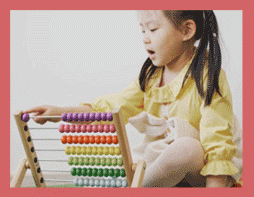Key Concept: Number and Mathematics

Concepts of number and math are highly valued in the West in terms of formal schooling and its emphasis on both math and literacy (Gardner, 1983). But of course, like clouds in the sky, mathematics is a universal reality of our world; therefore, children worldwide and in different cultures acquire an understanding of mathematical concepts.
In Ontario, we can never seem to agree on how to formally teach mathematics in elementary school, and we waver between a “conceptual approach” and an “applied” or “basic skills” approach, with the current thinking in Ontario in 2024 going with a “back to basics” notion.
But our conversation about math concepts begins before math instruction. In infancy and toddlerhood, a basic notion of “one,” “less,” and “more” appears; such ideas are supported by the adults, tools, and cultural contexts in which they are learned. I go through some key ways of thinking about numbers from infancy through to schooling across cultures to help us think about how number concepts are both universal and culturally constructed.
Siegler and Alibali (2019) refer to research conducted with infants on understanding numbers in experiments that used simple visual depictions of different quantities of circles. You may remember from Chapter 3 on attention that there is an experimental approach to studying what infants know, even if they cannot tell us. It is the habituation paradigm, and you may remember it from the pepper jar video from chapter 3.
Let us turn to the experiments carried out by Xu, Spelke, and Goddard (as cited in Siegler and Alibali, 2019) that involved circles being presented to infants. I have created a video demonstration to simulate how the infants reacted to the various circle displays.
Video: Number Concept Development (duration: 4:01)
Knowledge Check
Based on watching the video above, check your understanding with the following questions on the study by Xu, Spelke, and Goddard (as cited in Siegler and Alibali, 2019).
This experiment raises the question to most who study psychology: are humans born with an innate sense of number?
While this is a fascinating question, we are not as concerned with theories of innateness when supporting the conceptual development of children. Rather, we could take from such a study how “core” number is to humans, such that we are able to discriminate differences before we can even use language. Moving forward, we turn to different cultures to understand how children develop such concepts in particular ways.
The Abacus as a Cultural Tool
The abacus is a very influential cultural artifact. While its origins are unknown, according to Wikipedia, it has been used extensively in East Asia.
A notable Japanese cognitive scientist named Giyoo Hatano studied both the development of math concepts and the links this development had with the abacus. Inagaki and Miyake (2007) explore his contributions, which they identify to be cross-cultural in their very nature.
Hatano was inspired by Piaget and Vygotsky, but they report on him bringing a uniquely Japanese perspective to his study of concept development, such that he had an impact on its study cross-culturally. Hotano identified the motivation to think as being part of the ability to think, which meant that sociocultural factors would always be essential to consider. He also placed his emphasis on everyday activities rather than experimental methodology as had been done in the West. In this way, he would have been fascinated by the study on clouds that was discussed earlier in the chapter because of its focus on an everyday topic and its exploration through conversation (Fragkiadaki, Fleer and Ravanis, 2019).
Hatano was interested in the use of the abacus in the development of both number and math concepts. He discovered that experts using the abacus had a visuospatial representation that made it different from working with numbers alone. In case you are unfamiliar with an abacus, this is what it looks like:

Reflection Journal
Reflection 4.2: What do you think Hatano meant by “visuospatial representation” as you look at the above abacus. Think about this for a moment, then write how you might work through a division problem (12 divided by 3) in different ways: with the numbers in your mind, on a piece of paper and using an abacus. How do you remember the numbers or think about their relationships when you use an abacus (even if you haven’t used one before)? Write 3-4 sentences explaining what you think about the role of visuospatial representation in your division.
Inagaki and Miyake (2007) explain how Hatano proposed that young children first learn things through concrete understandings and day-to-day experiences. Then, ut as children learn the cultural meaning of these things and events, they understand them conceptually.

